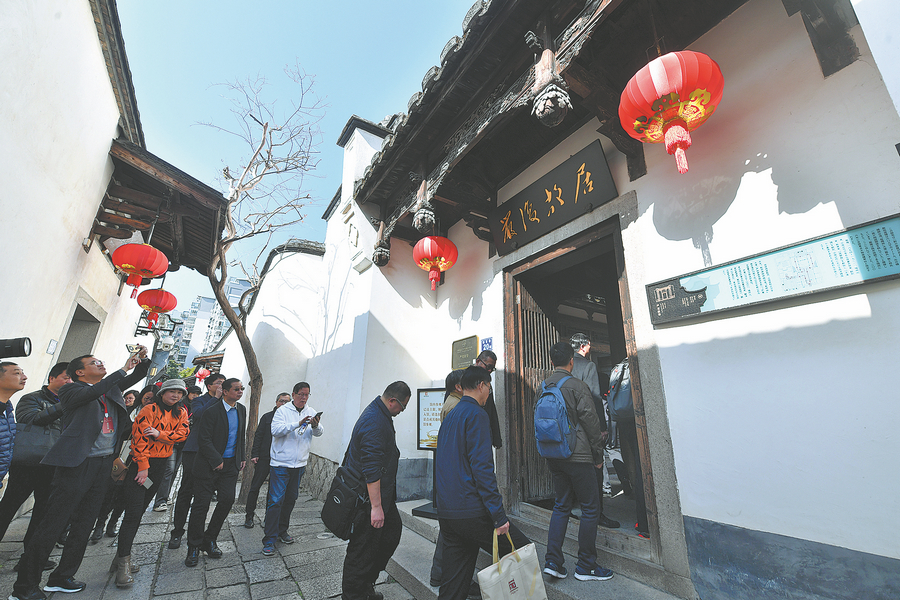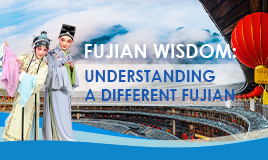Surprising encounters on streets where heritage lives on to this day
 Scholars visit modern translator and thinker Yan Fu's residence in the neighborhood on Jan 6. LYU MING/CHINA NEWS SERVICE
Scholars visit modern translator and thinker Yan Fu's residence in the neighborhood on Jan 6. LYU MING/CHINA NEWS SERVICE
Among the dozens of others are Tang Dynasty (618-907) librarian and Confucian scholar Huang Pu; Qingera physician Zhu Tianzhang, governor-general of Jiangsu, Anhui and Jiangxi provinces Liang Zhangju, who also undertook efforts to eliminate opium trafficking, and Shen Baozhen, who played a vital role in modern shipbuilding, shipping and maritime development in China; as well as local Minju Opera performer Zheng Yizou (1903-93).
Pagodas, temples, archways and other public structures are also tucked among these private residences.
Today, Sanfang Qixiang is a 5A tourism site — the highest national designation — and on China's tentative list seeking UNESCO World Heritage Site status. It was first built during the Jin Dynasty (265-420) and continuously added to and renovated since.
It's hailed as a "living museum of Ming (1368-1644) and Qing architecture".
But, it was slated for demolition in the 1990s, after the land was sold to real estate developers, until President Xi Jinping, then secretary of the Fuzhou Municipal Committee of the Communist Party of China, intervened to save the neighborhood from the wrecking ball. Fuzhou's old buildings have been given a new lease on life, thanks to this and subsequent preservation efforts.
The historical figures who once occupied these dwellings no longer live here — but their stories do.
Their homes now literally house the past. And they remind us how it shapes the cultural future of not just Fuzhou, but all of China — and, ultimately, the heritage that inhabits not only this community but also the world we all share.
Visitors to this ancient network of streets will discover that they are home to both local and universal legacies, and are an excellent place to get lost in time.
erik_nilsson@chinadaily.com.cn




